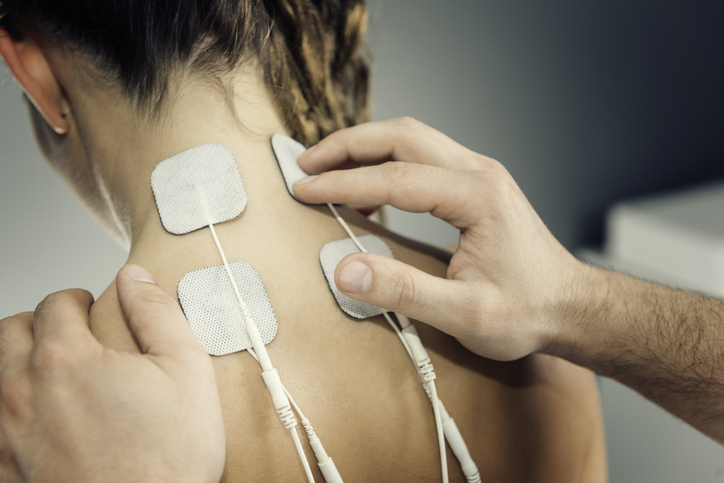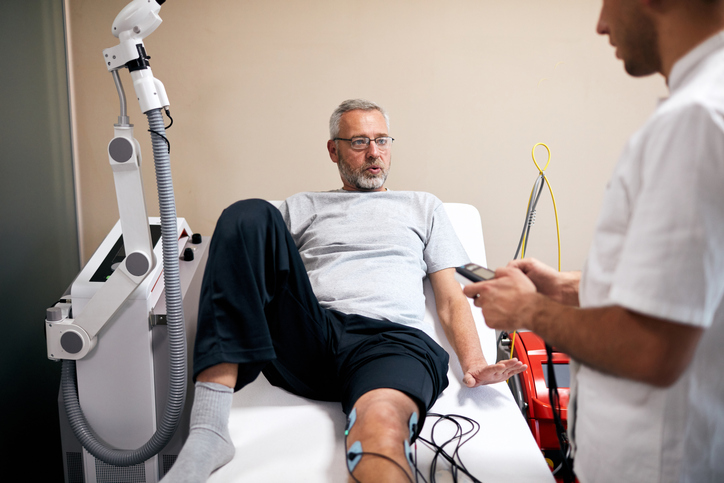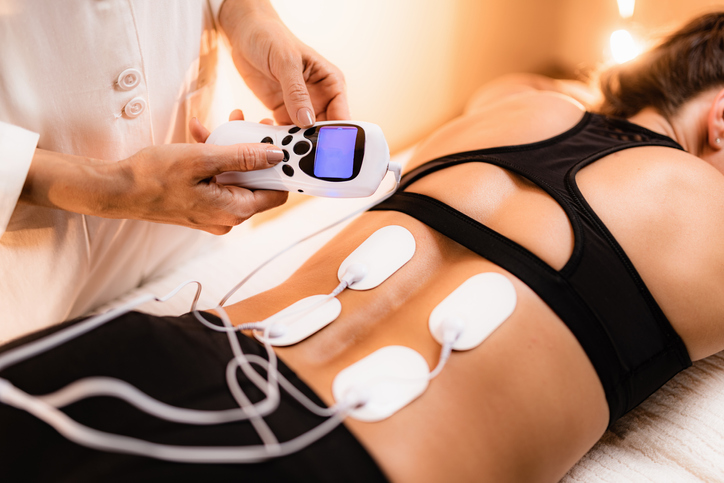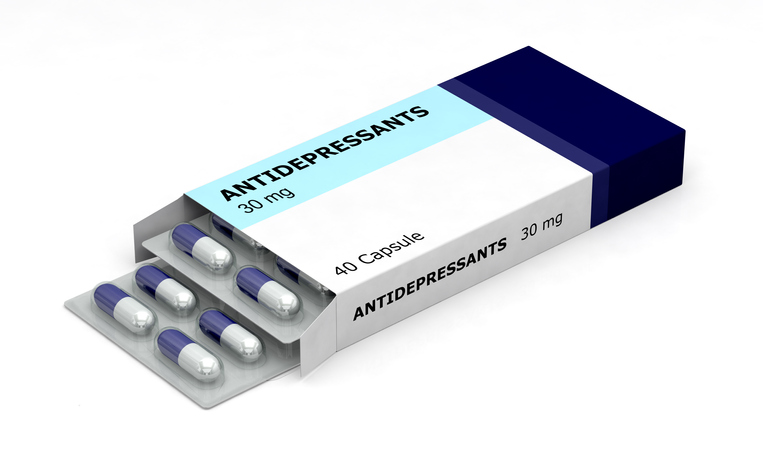Treatments
What Is Transcutaneous Electrical Nerve Stimulation (TENS) Therapy?
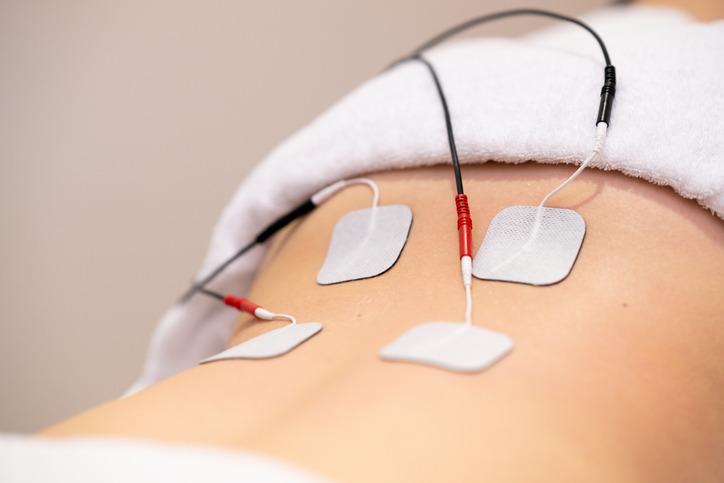
What is trancutaneous electrical nerve stimulation (TENS)?
Transcutaneous electric nerve stimulation (TENS) is a non-invasive pain-reduction therapy that involves using a portable device (TENS unit) that applies slight electrical pulses on painful areas of the body. These electrical pulses flood the nervous system, reducing its ability to transmit pain signals from the spinal cord to the brain. The electrical pulses also cause the body to produce natural pain relievers called endorphins.
What is a TENS unit?
A TENS unit is approximately the size of a large smart-phone. The device contains wires that lead to electrodes which attach to the skin via sticky pads. These electrodes deliver low-voltage (10 Hz to 50 Hz) electrical pulses to the painful area. The electrical pulses stimulate the nerve fibers in the area and reduce the pain signals being sent to the brain. A TENS unit is equipped with controls that can alter the intensity, frequency and duration of the electrical pulses, making it an adaptable therapy that can easily be individualized for pain reduction.
What pain conditions can be treated with TENS therapy?
Transcutaneous electric nerve stimulation can be used as a therapy for various pain conditions including, but not limited to, the following:
- Arthritis
- Menstrual pain
- Knee pain
- Neck pain
- Back pain
- Endometriosis
- Sports injuries
- Osteoporosis
- Fibromyalgia
- Tendinitis
- Labor Pain
- Cancer Pain
- Bursitis
How does TENS therapy work?
TENS therapy is a non-invasive, non-medication option for pain management. A TENS unit can be used in a clinical setting or at home.
A TENS device includes directions regarding settings that can be changed to alter the intensity, duration and frequency of the electrical pulses. If an individual plans to use a TENS unit at home, these settings should be reviewed with a health care provider to ensure the individual understands them clearly for safety reasons. To obtain optimal results, a handheld controller is typically included with the device so the frequency, pattern and intensity of the electrical pulses can be adjusted during use.
When using a TENS unit, the sticky pads connected to wires are placed on the painful area and the device is turned on. The pads should not be applied over the heart or on the chest. Users of a TENS device often report feelings of moderate tingling to slight muscle contractions. For a TENS unit to be deemed clinically effective, it should cover a range from 2 to 250 pulses per second.
Who should NOT do TENS therapy?
While TENS therapy is safe for most people, some precautions should be taken before using the device. Anyone who has an allergy to certain adhesives should watch for redness, rashes or irritation. Hypoallergenic pads are available if allergies are a concern. Experts recommend that certain individuals should completely avoid the use of a TENS device unless otherwise advised by a physician:
- Pregnant women
- Individuals with epilepsy
- Individuals with heart conditions
- Individuals who have a pacemaker
What are the advantages of TENS therapy?
Most individuals who use a TENS device will not experience any side effects and often find a degree of pain relief. TENS therapy can be used alone or in combination with pain medication. A considerable advantage of a TENS unit is its portability; because the unit is small, it can be discreetly carried in a pocket, on a belt, or in a purse for use while traveling.
